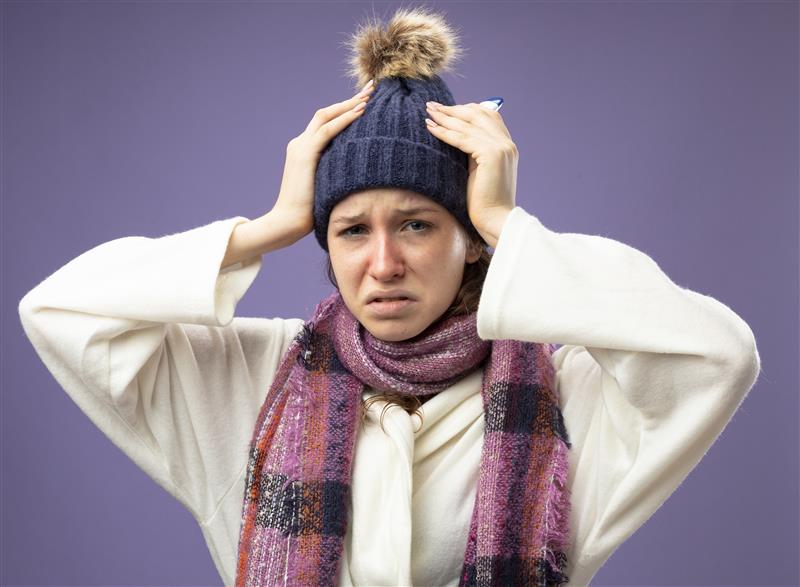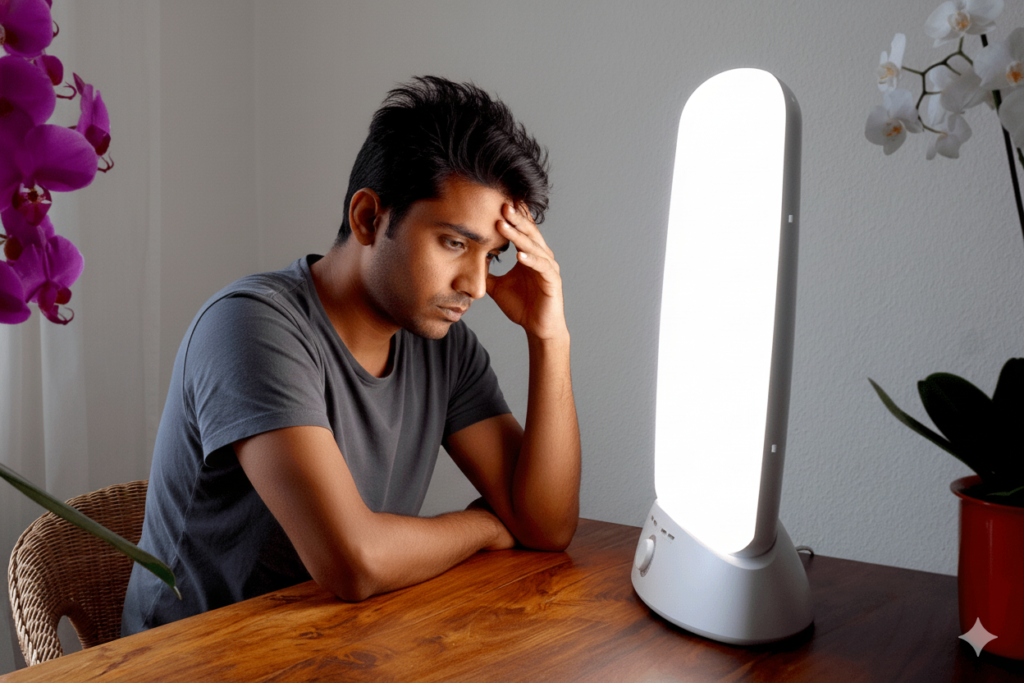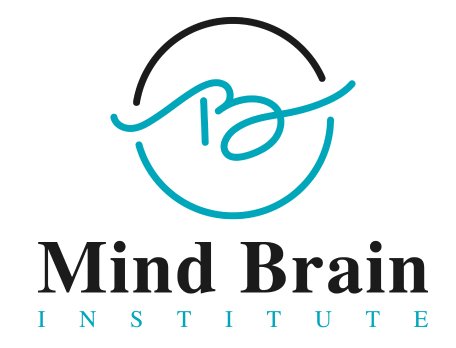
- Posted By Dr. Anuranjan Bist
- Comments 0
Thousands of people are getting their spirits grey with the weather every year as daylight fades away and the sky becomes muddled. When one feels low in the winter, it may sound like a normal feeling; however, it is far more than winter blues to many. It is a medical disorder called Seasonal Affective Disorder (SAD), and the symptoms may be extremely disturbing. It is possible to feel tired, irritated, depressed, have sleeping disorders, and lose interest in life. The good news, however, is that it affects those who are experiencing seasonal affective disorder.
It has been seen in science that even a simple thing like light could be used to lighten the darkness. Light treatment of depression, also called light therapy of depression, has emerged as one of the most reliable, supported by research methods, of alleviating the symptoms of SAD. It is cheap, available, and unexpectedly effective; however, now, it is prescribed as a first-line therapy by psychiatrists worldwide.
What is Seasonal Affective Disorder?
SAD is a variant type of major depression, which manifests itself periodically, typically beginning at the end of autumn and exacerbating in the winter. The primary cause? Low exposure to the sun.
As the amount of natural light is reduced, your body’s internal clock – the circadian rhythm starts to change. This interferes with sleeping patterns, decreases serotonin in the body, and elevates the production of melatonin. This leads to biochemical imbalance, which causes depressive symptoms.
One report indicated that approximately 5 percent of adults in the U.S. have SAD, with the duration of symptoms taking up 40 percent of the year. According to another study by the NIH, women have a four times greater likelihood of developing SAD than men do. These statistics reveal the importance of early intervention and the renewed interest in light treatment of depression.
How Does Light Therapy Work?
Light therapy involves the use of full-spectrum artificial light, which is very bright and is used to imitate the sun in order to treat depression. In a session, an individual sits close to a light box of 10,000 lux that is medically approved and takes 20-40 minutes, often immediately after waking up. But what is the effect of this mere exposure on mood?
It restores the circadian rhythm
The internal clock depends on the sunshine in the morning in order to know when to wake up, when to release hormones, and when to be alert. This system is disoriented by winter darkness. The light therapy for depression helps in giving that absent signal, and the rhythm is reestablished.
It boosts serotonin
The natural mood stabilizer of your brain is serotonin. Research indicates that light exposure enhances the level of serotonin, which alleviates depressive symptoms.
It lowers the levels of melatonin when it is not necessary
Individuals who experience SAD tend to be sleepy during the day owing to an imbalance in the release of melatonin. Light therapy for depression inhibits the production of melatonin during the morning, which suppresses fatigue.
It resembles the daylight of nature without UV light
Recent light boxes can omit the undesirable ultraviolet rays and provide therapeutic brightness.
One of the most effective non-pharmacological treatment options for seasonal depression, research published in Dialogues in Clinical Neuroscience discovered that light therapy alleviated SAD symptoms in close to 80 percent of patients selected in highly selective study groups.
What are the Evidence-Based Benefits of Light Treatment for Depression?
Clinicians suggest that light treatment should be used to treat depression due to the following reasons:
Fast-acting: Some individuals start feeling better in 3-5 days, and the maximum benefits are seen in 1-2 weeks.
Drug-free and non-invasive: When an individual does not want to take antidepressants, or when he or she wants to combine the two, light therapy as a treatment for depression is a natural and non-toxic solution.
Easy to incorporate into everyday life: 20 minutes of a session during breakfast time can make a great difference in improving the mood over the day.
Endorsed by psychiatric guidelines: Such organizations as Mayo Clinic, APA, and NIMH support the use of light as a treatment of depression as a first-line treatment of SAD.

Is Light Therapy for Depression Effective Beyond SAD?
While primarily used for seasonal affective disorder, light therapy for depression can also support treatment for:
- chronic depression
- postpartum depression
- circadian-rhythm sleep disorders
- shift-work fatigue
One of the reasons why mental health experts rely on light treatment for depression as a part of comprehensive care is its versatility.
How to Use Light Therapy for Depression the Right Way?
Light therapy for depression needs to be used correctly to receive the maximum benefits. Misuse can happen by using the light box at the wrong time of day or at an incorrect distance, which may reduce effectiveness. Here’s the clinically recommended method:
Timing: Morning works best
- Light therapy for depression should be used within the first hour of waking up. Morning sessions reset the internal clock and reduce daytime sleepiness.
Duration: 20 to 40 minutes
- Research has demonstrated that consistent exposure within this window provides the strongest antidepressant effect.
Light intensity: 10,000 lux
- Lower-intensity lights require longer exposure and are less effective.
Distance: About 40–60 cm from your face
- You don’t need to look right at the light, just keep it in your periphery.
Daily consistency
- Skipping days diminishes the overall effect of light therapy for depression.
It is recommended that patients should not use it without consulting clinicians, particularly in the case of bipolar disorder, a history of severe migraine, and eye conditions. Supervision makes light treatment for depression beneficial and safe.
What Are the Risks and Side Effects You Need to Know?
Light therapy for depression is relatively safe, but can have mild and temporary side effects:
- Eye strain
- Headaches
- Nausea
- Irritability
- Restlessness
Individuals with bipolar disorder can also present with mood elevation or hypomania, so psychiatric monitoring by a professional is called for. These risks are minimal, weighed against the potential benefits, but they do underscore the need for the expert guidance of light treatment for depression.
How Does the Mind Brain Institute Support Patients with SAD?
The Mind Brain Institute does not offer in-clinic light therapy sessions, but we work closely with patients who choose to use light therapy for depression at home. Our role is to make sure every step is safe, personalized, and according to the rhythm of the individual’s biology. Here is how we support individuals with Seasonal Affective Disorder:
Accurate diagnosis and pattern evaluation
SAD may resemble other mood disorders. We start by determining whether the symptoms in fact follow a seasonal pattern and whether light treatment for depression is suitable for a person’s needs and health history.
Guidance for safe home use
We help patients choose credible devices, set the right timing, usually in the mornings, and avoid habits that may interfere with sleep or cause overstimulation. This ensures light therapy for depression is done effectively and responsibly.
Integrating neuromodulation therapies
When deeper intervention is required, we provide rTMS and tDCS that act upon mood-regulating neural circuits and augment the benefits derived from at-home light therapy routines.
Restoring the circadian rhythm
We support patients with structured sleep, nutrition, and behavioral strategies that enhance the effects of light treatment for depression and rebuild natural biological balance.
Continuous monitoring
We don’t just recommend strategies and then step aside. We stay connected with each person’s journey, like tracking progress, observing mood changes, and adjusting plans so recovery becomes steady and long-lasting.
Even though we do not offer light therapy as such, our main focus is on mood circuits of the brain, the circadian rhythms, and emotional balance through science-based neuromodulation and structured routine support. We support people to restore clarity, energy, and resilience from within by tackling the root causes of disruptions caused by SAD. It is the seasonal changes that are affecting your well-being. The Mind Brain Institute can help you take the next step towards healthier, more balanced mental health.


